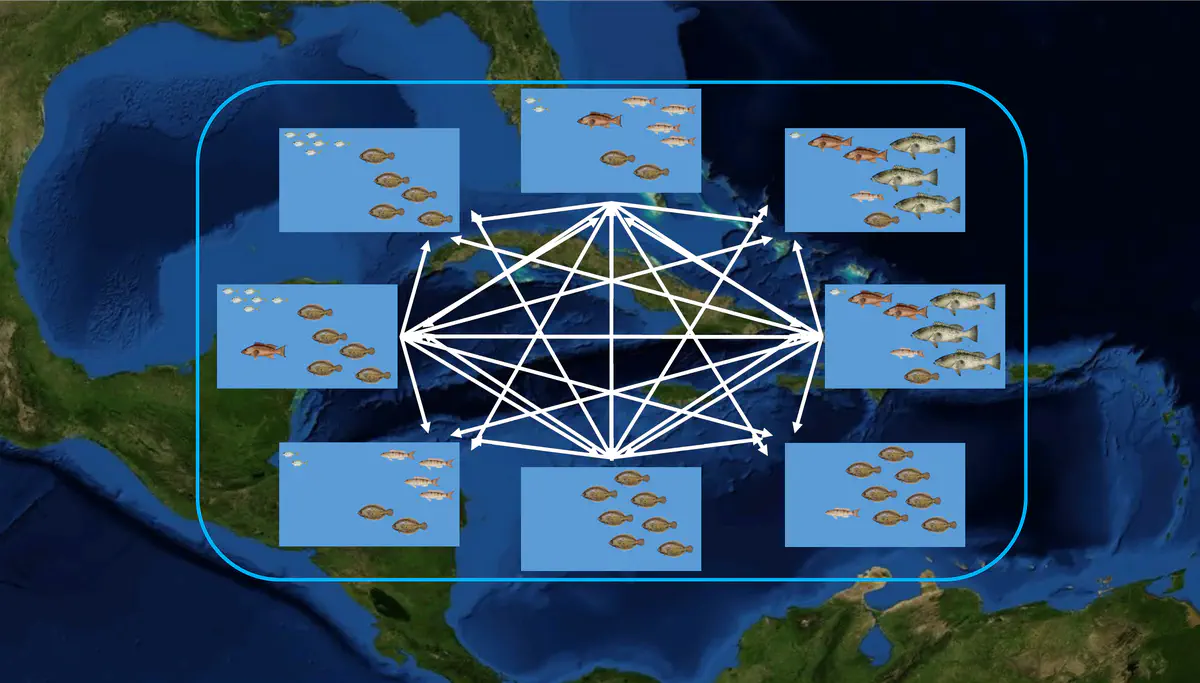Spatiotemporal dynamics of marine metacommunities

Many processes can drive distribution and diversity of marine fishes across multiple spatial and temporal time scales. The metacommunity concept, introduced to merge local and regional ecological approaches under one unifying framework, focuses on quantifying the relative influences and synergistic effects of these processes on the composition of species within marine faunal communities and their spatiotemporal dynamics. Research on metacommunities, defined as a group of local communities in a given area linked through the dispersal of potentially interacting species, is severely lacking for marine systems. Unlike those in hierarchical (e.g., streams and riverine systems) or discrete (e.g., lakes and ponds) aquatic systems, dispersive processes in a marine metacommunity work on a broad range of scales in all three spatial dimensions, and these processes can vary over multiple temporal scales. Thus, marine systems contain metacommunities driven by complex mechanisms that may be difficult to identify and differentiate. This is particularly true for metacommunities composed of active-dispersing marine ichthyofauna. These metacommunities are highly dynamic, comprising indistinct and impermanent habitat patches potentially connected through both active dispersal of juvenile and adult fish and passive dispersal of fish larvae.
Because of the highly dynamic nature of marine metacommunities, it is crucial to identify spatial and temporal variability in their structure to better understand the mechanisms influencing marine ecosystems. Two research approaches have been applied to the investigation of empirical metacommunities: 1) a mechanistic approach, which is used to establish a direct empirical relationship between the structure of a metacommunity and its influencing factors; and 2) a pattern-based approach, which characterizes metacommunities solely based on species composition and abundance data, the structure of which can then be used to identify latent factors influencing a metacommunity for which habitat and environmental data are not available. For my dissertation, I am combining mechanistic and pattern-based approaches to investigate the spatiotemporal dynamics of coastal metacommunities in the western Atlantic using three large, publicly available fish abundance and composition datasets. My dissertation addresses questions relating to the following three themes:
- Space: How are coastal ichthyofaunal metacommunities structured in the tropical and subtropical western Atlantic? How do these structures change over different spatial scales?
- Time: Over what temporal scales do western Atlantic metacommunities vary? Are temporal variations consistent across space and among coastal systems?
- Mechanism: What are the most important factors influencing metacommunity structure in the western Atlantic? Does the relative influence of different factors change with respect to space or time? How does mechanism relate to observable patterns of metacommunity structure?